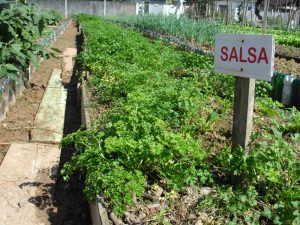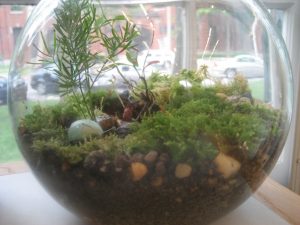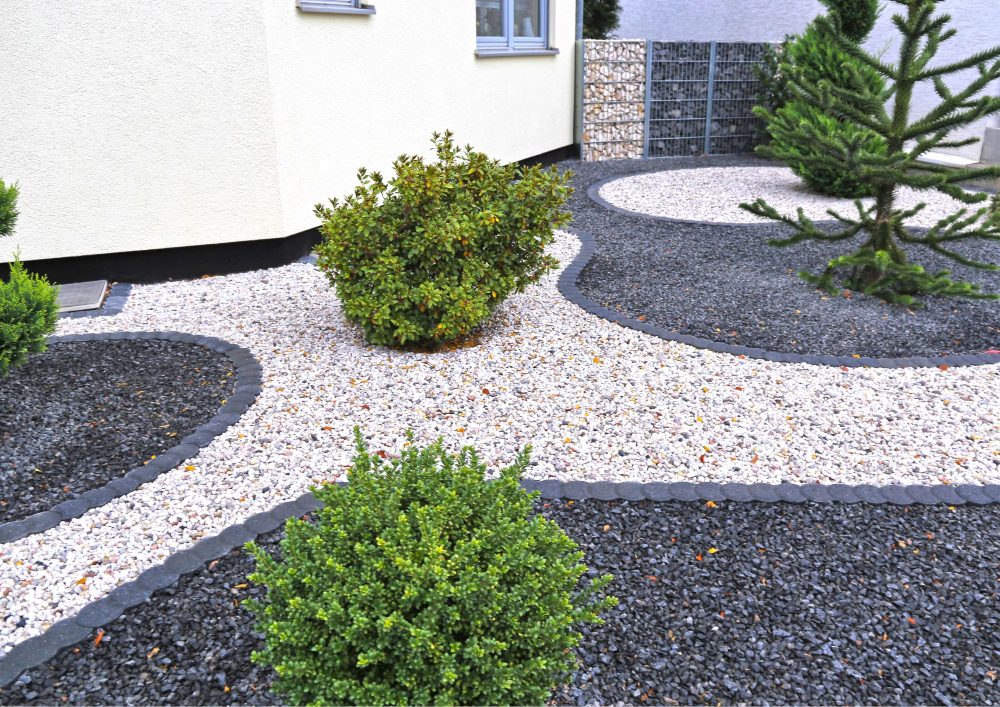
Gravel gardens have gained popularity as an aesthetically pleasing and low-maintenance landscaping option. These gardens not only offer a unique visual appeal but also serve as an excellent solution for areas with challenging soil conditions or limited water resources.
In this comprehensive guide, delve into the intricacies of crafting a successful gravel garden, covering everything from the initial design phase to ongoing maintenance.
Designing Your Gravel Garden
Contents
- 1 Designing Your Gravel Garden
- 2 Planting Strategies for Gravel Gardens
- 3 Maintenance Tips for Gravel Gardens
- 4 Summary
- 5 Frequently Asked Questions
Site Assessment
Before you commence your gravel garden project, perform a comprehensive site assessment. Consider elements such as the amount of sunlight, the composition of the soil, and the drainage conditions.
Gravel gardens thrive in locations with excellent drainage, ample sunlight, and favourable soil composition. It is crucial to carefully select a suitable location for your project to ensure its success.
Selecting Gravel Types
Gravel selection plays a pivotal role in the design of a gravel garden. Choose gravel with the right size and texture, keeping in mind both the aesthetic preferences and the specific needs of the chosen plants. Coarser gravels aid in drainage, while finer ones contribute to visual appeal.
Tips for Selecting Gravel Types
- Size Matters: The size of the gravel is a key factor. Coarser gravels enhance drainage, preventing water stagnation around plant roots.
- Texture Considerations: Fine gravels contribute to the visual appeal of the garden, offering a smoother and more polished look.
- Plant Compatibility: Tailor your gravel selection to match the needs of the plants you intend to grow. Some plants thrive in coarser substrates, while others prefer finer textures.
Layout and Structure
Plan the layout of your gravel garden, considering the placement of pathways, focal points, and plant beds. Introduce structural elements like rocks or decorative features to add visual interest.
A well-designed gravel garden achieves a harmonious balance between hardscape and plantings.
Plant Zones
Divide the garden into distinct plant zones based on water and sunlight requirements. Group plants with similar needs together to ensure efficient water usage and optimal growth conditions. This zoning approach contributes to the overall health and vitality of the garden.
Elements of Balance
- Hardscape Fusion: Seamlessly integrating gravel pathways, borders, and other hardscape elements with the lush greenery ensures a cohesive and visually captivating design.
- Natural Symbiosis: The thoughtful arrangement of gravel and plants fosters a natural symbiosis, where each element enhances the beauty and functionality of the other.
Advantages of Plant Zones
- Resource Efficiency: Grouping plants with comparable water and sunlight needs allows for targeted resource allocation, ensuring each plant receives the precise care it requires.
- Optimized Growth Conditions: By tailoring specific zones to the unique needs of plant varieties, the garden creates microenvironments that cater to their growth preferences.
- Enhanced Visual Appeal: Plant zones contribute to the aesthetic appeal of the garden by creating visually cohesive clusters, adding a sense of order and beauty to the overall landscape.
Planting Strategies for Gravel Gardens

Drought-Tolerant Plant Selection
Gravel gardens thrive in arid conditions, making the selection of drought-tolerant plants crucial. Consider incorporating succulents, Mediterranean herbs, and ornamental grasses.
Plant Variety Recommendations
- Succulents: Embrace the water-wise nature of succulents, known for their ability to withstand arid conditions. Varieties like Aloe, Sedum, and Echeveria bring unique textures and colours to the landscape.
- Mediterranean Herbs: Infuse your gravel garden with the aromatic delights of Mediterranean herbs. Rosemary, lavender, and thyme not only add fragrance but also contribute to the garden’s visual appeal.
- Ornamental Grasses: Introduce the gentle sway of ornamental grasses. Their graceful movement adds a dynamic element, and varieties like Fountain Grass and Maiden Grass bring elegance to the garden.
Research Local Plant Varieties
A crucial step in crafting gravel gardens is to research and select plant varieties that are not just survivors but flourish in your local climate. Consider the unique conditions of your region, such as temperature, sunlight, and soil type, to ensure your chosen plants are well-suited for success.
Research Guidelines
- Local Climate Analysis: Understand the specific climate conditions in your area, including temperature ranges, rainfall patterns, and any seasonal variations.
- Native Plant Consideration: Explore native plant varieties that are naturally adapted to your region. These plants often require less maintenance and are more resilient.
- Consult With Experts: Seek advice from local nurseries or horticulturists who can provide insights into plant varieties that thrive in your specific climate.

Soil Preparation
While gravel gardens are known for their adaptability to poor soil conditions, proper soil preparation is essential. Enhance fertility and water retention by incorporating organic matter, such as well-rotted compost. Well-prepared soil lays the groundwork for healthy plant growth.
Soil Preparation Guidelines
- Adaptability: Acknowledge the adaptability of gravel gardens but understand the need for a balanced foundation.
- Incorporate Organic Matter: Introduce well-rotted compost to the soil to enhance fertility. This organic addition contributes to nutrient availability for plant roots.
- Water Retention: Improve water retention in the soil, a key factor in sustaining plant growth, by ensuring proper incorporation of organic material.
- Holistic Plant Health: Well-prepared soil sets the stage for robust plant growth, promoting overall garden health.
Planting Techniques
Implement strategic planting techniques to ensure the success of your gravel garden. Create planting pockets within the gravel, adding a mix of soil and compost for each plant. Thoroughly water newly planted specimens, allowing the roots to establish themselves in nutrient-rich pockets.
Insightful Planting Techniques
- Crafting Purposeful Planting Pockets:
- Strategic Placement: Delicately carve out planting pockets within the gravel, offering tailor-made spaces for each plant.
- Considered Sizing: Ensure the planting pockets are adequately sized to accommodate the anticipated growth of the plant’s root system, fostering unhindered development.
- Diverse Depths: Vary the depths of planting pockets based on the specific requirements of each plant, creating a nuanced support system.
- Balanced Soil and Compost Fusion:
- Customized Composition: Tailor the blend of soil and compost for each planting pocket, recognizing and catering to the distinctive needs of the plants to be introduced.
- Nutrient Enrichment: Infuse the mixture with organic matter to enhance the soil’s fertility, providing vital nutrients for robust root development.
- Harmonious Ratios: Maintain a balanced ratio of soil to compost, ensuring proper aeration and drainage for the overall health of the plants.
- Thorough Watering Ritual:
- Immediate Hydration: Upon planting, indulge in thorough watering for each specimen to saturate the planting pocket. This aids in settling the soil, establishing immediate contact with the roots, and initiating the essential hydration process.
- Establishment Period: During the initial weeks, prioritize consistent watering to facilitate the establishment of roots. Adjust the watering frequency based on the moisture requirements of the specific plant species.
- Vigilant Root Nurturing: Regularly monitor soil moisture levels, adapting the watering routine to accommodate environmental variations such as weather conditions and seasonal changes.
Mulching for Moisture Retention
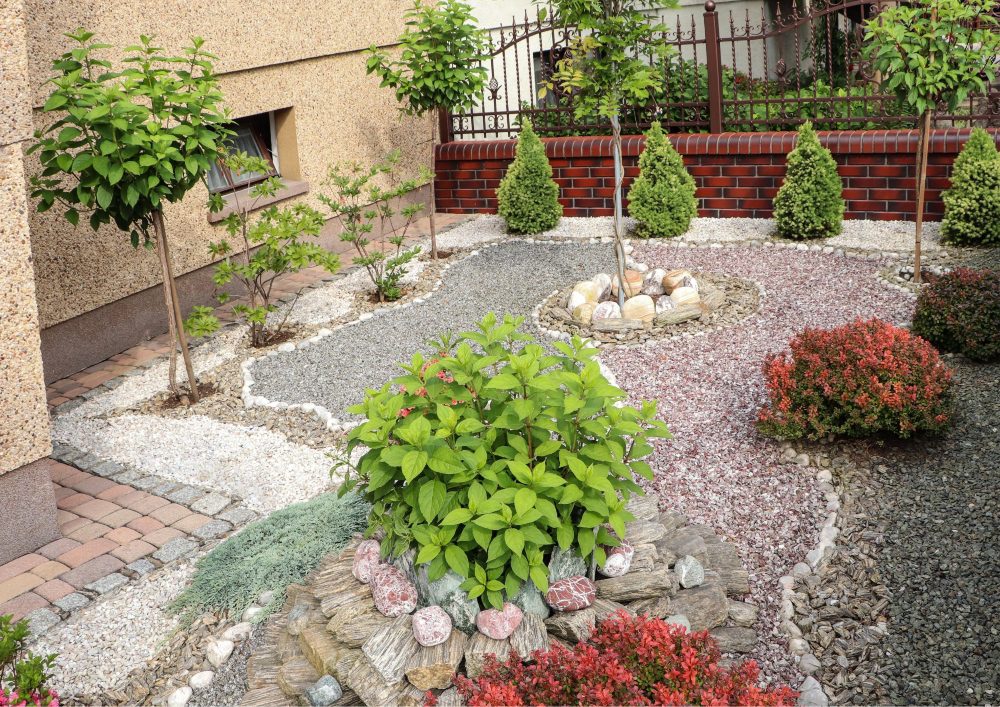
Despite their water-efficient nature, gravel gardens benefit from strategic mulching. Apply a layer of organic mulch to aid in moisture retention, suppress weeds, and regulate soil temperature. This additional layer contributes to the overall health and resilience of the garden.
Key Contributions of the Additional Layer
- Nutrient Enrichment:
- The enriched planting pockets within this additional layer act as reservoirs of essential nutrients, ensuring a continuous supply that promotes plant health and vigour.
- Root Support and Stability:
- By facilitating the development of strong and stable root systems, the additional layer provides crucial support for plants, enhancing their ability to absorb nutrients and increasing overall resilience.
- Moisture Regulation:
- The layer aids in regulating moisture levels, contributing to an environment where plants can access consistent hydration, fostering their well-being and adaptability.
- Environmental Adaptability:
- This additional layer enhances the garden’s adaptability to various environmental conditions, allowing plants to thrive in a range of circumstances and ensuring sustained health.
Companion Planting
Explore companion planting strategies to maximize the benefits of plant interactions. Pairing compatible plant species can help deter pests, enhance soil fertility, and promote overall garden health. Consider the symbiotic relationships between different plants for a thriving ecosystem.
Key Aspects of Fostering Symbiotic Relationships in Gravel Gardens
- Complementary Growth Patterns:
- Choose plant species with complementary growth patterns in gravel gardens. Taller plants can provide shade and structural support for shorter, ground-covering varieties, creating a balanced and visually appealing landscape.
- Nutrient Cycling and Sharing:
- Introduce plants with diverse nutrient needs to encourage efficient nutrient cycling in gravel gardens. Some plants may excel at extracting specific nutrients from the soil, benefiting neighbouring plants through a mutually supportive nutrient-sharing system.
- Pollination Partnerships:
- Select flowering plants that attract pollinators like bees and butterflies in gravel gardens. This facilitates pollination across the garden, promoting biodiversity and supporting the reproduction of various plant species.
- Seasonal Succession:
- Plan for seasonal succession by incorporating plants with staggered blooming periods in gravel gardens. This ensures that the garden remains vibrant and visually appealing throughout different seasons, providing continuous interest and ecological benefits.
- Pest Management through Diversity:
- Diversify the plant species to naturally manage pests in gravel gardens. Some plants may repel pests, while others attract beneficial insects, creating a balanced and resilient ecosystem.

Container Gardening in Gravel Gardens
Integrate container gardening into your gravel garden design for added versatility. Containers allow you to showcase specific plants, experiment with different arrangements, and easily adapt the garden’s layout over time. They also offer a solution for growing plants in challenging areas.
Key Benefits of Containers in Gravel Gardens
- Precision in Plant Display:
- Experimentation with Arrangements:
- The use of containers grants you the freedom to experiment with various plant arrangements in gravel gardens. You can easily alter the composition, colour schemes, and textures, fostering creativity and adaptability in garden design.
- Adaptable Garden Layout:
- Containers facilitate the seamless adaptation of the gravel garden’s layout over time. Whether you wish to reposition plants for seasonal variations or introduce new additions, containers offer flexibility in design without disturbing the established gravel bed.
- Solution for Challenging Areas:
- Gravel gardens may encompass challenging areas with poor soil quality or limited space. Containers act as a strategic solution, allowing you to introduce plants to these areas while maintaining control over the soil composition and creating micro-environments tailored to specific plant needs.
- Ease of Maintenance:
- Container gardening in gravel gardens simplifies maintenance tasks. It enables targeted care for individual plants, making watering, fertilizing, and monitoring plant health more efficient.
- Portability and Seasonal Changes:
- Containers provide portability, allowing you to move plants as needed, ensuring optimal sunlight exposure or protection during extreme weather conditions. This flexibility supports seasonal changes and the dynamic nature of gravel garden landscapes.
- Enhanced Visual Interest:
- Containers add layers and heights to the gravel garden, enhancing visual interest and contributing to a dynamic and textured aesthetic. This vertical dimension can elevate the overall design, making the garden more captivating.
Maintenance Tips for Gravel Gardens
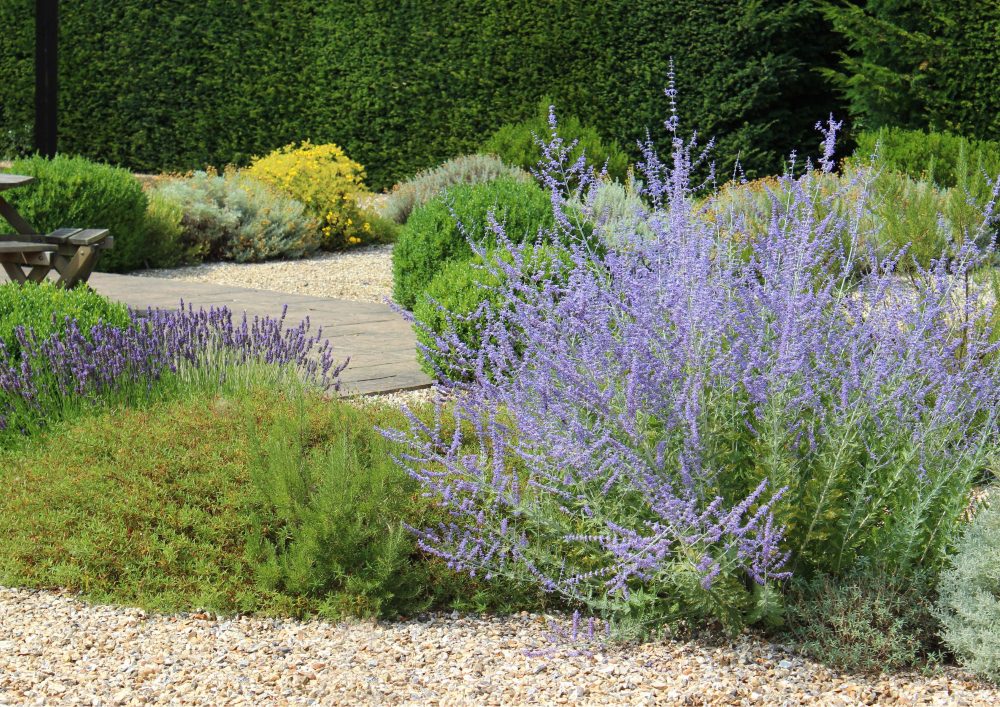
Watering Practices
Establish a consistent watering routine, taking into account the water needs of the specific plants in your gravel garden. While these gardens are designed to be water-efficient, regular watering is crucial, especially during dry periods. Use a drip irrigation system or a soaker hose to deliver water directly to the plant roots.
Weed Control
Implement effective weed control measures to prevent unwanted plants from competing with your chosen vegetation. Regularly inspect the garden for weeds and promptly remove them to maintain a tidy and healthy landscape. Applying a layer of mulch can also aid in weed suppression.
Pruning and Cutting Off Spent Flowers
Incorporate regular pruning and cutting off spent flowers into your maintenance routine to encourage healthy growth and prolonged flowering periods. Remove spent flowers, damaged foliage, and any overcrowded or diseased plant material. This promotes better air circulation and prevents the spread of diseases.
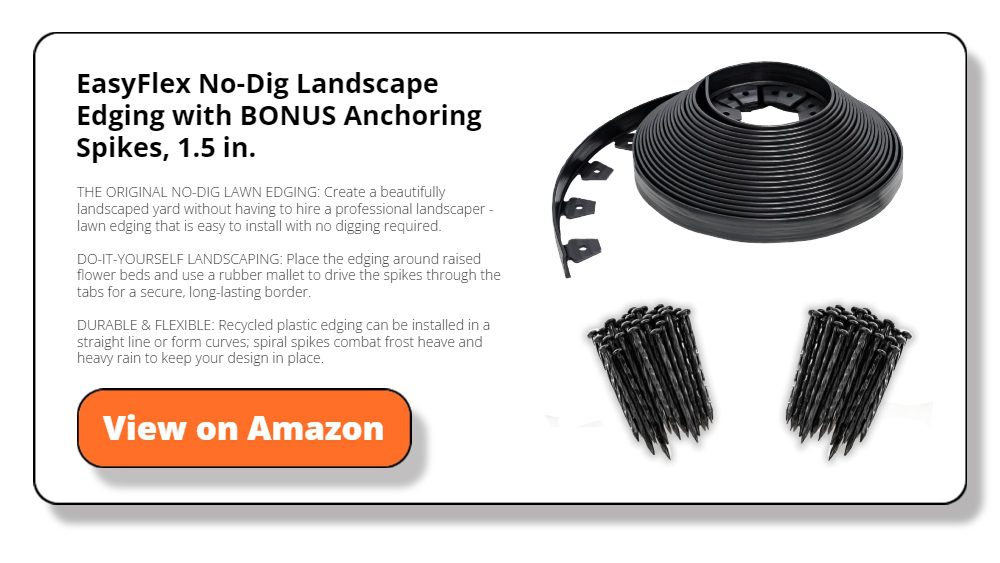
Fertilization Practices
While gravel gardens are designed to thrive in lean soils, periodic fertilization can boost plant health. Use a balanced, slow-release fertilizer to provide essential nutrients without promoting excessive growth. Be mindful of the specific needs of the plants in your garden, adjusting fertilization accordingly.
Seasonal Assessments
Conduct seasonal assessments of your gravel garden to address any changes in plant health, soil conditions, or overall aesthetics. Adjust your maintenance practices based on seasonal requirements, such as increased watering during hotter months or protection from frost in colder seasons.
Summary
Creating a successful gravel garden involves careful consideration of design, thoughtful plant selection, and diligent maintenance. By adhering to the principles outlined in this guide, you can cultivate a resilient and visually stunning gravel garden that thrives in various conditions.
From the initial planning stages to ongoing care, each aspect contributes to the overall success of your gravel garden, offering a sustainable and appealing landscaping solution.
Frequently Asked Questions
1. What is a gravel garden?
A gravel garden is a type of garden that utilizes gravel as a primary surface material instead of traditional soil. It offers a low-maintenance and visually appealing alternative to conventional gardens.
2. Why choose to have a gravel garden?
Gravel gardens are chosen for their low maintenance, water efficiency, adaptability to challenging areas, and versatility in plant selection. They provide an aesthetically pleasing and environmentally friendly landscaping option.
3. How do I design a gravel garden?
Designing a gravel garden involves considering factors such as plant selection, arrangement, and the overall aesthetic. It’s essential to plan for well-draining soil, strategic plant placement, and visual appeal.


